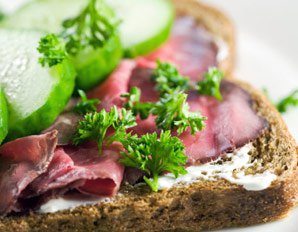Meal Planning For People With Diabetes
 One of the fundamental components of proper self management of diabetes is awareness to proper nutrition. Statistics from ADA (American Diabetes Association) in 2010 shows diabetes as the 7th leading cause of death in the United States and new cases have shown that at least 1.4 million Americans are being diagnosed with diabetes every year. The secret to a healthy diabetic diet meal plan is really to plan ahead.
One of the fundamental components of proper self management of diabetes is awareness to proper nutrition. Statistics from ADA (American Diabetes Association) in 2010 shows diabetes as the 7th leading cause of death in the United States and new cases have shown that at least 1.4 million Americans are being diagnosed with diabetes every year. The secret to a healthy diabetic diet meal plan is really to plan ahead.
Adhering to a good diet habits are useful for everybody. By choosing nutritious foods and being mindful of serving sizes, your body can get the supplements it need and the appropriate measure of calories to function at its best. A solid, balanced diet can likewise help bring down the odds of getting certain sorts of cancer and heart illness.
Yes, I’d like to learn how medshape can help me lose weight!

When you have diabetes, you should be much more careful about making the right food choices. It is because your body doesn’t make enough insulin to help you utilize sustenance the way you have to. Without insulin, your body has a harder time changing food into energy. This implies you should be astute about what you eat, when you eat, and how much.
Have A Variation
When you eat a variety of foods, you have a greater chance of getting the vitamins and minerals your body needs. In case you don’t know you’re getting enough supplements from nourishment alone, consider taking a multivitamin consistently.
Be Consistent
Try to eat the same amount of carbohydrates on your every meal consistently. For instance, two pieces of toast and one and a half cup of some squeezed orange amounts to 45 grams of carbohydrate (30 grams for the toast and 15 for the squeezed orange). In the event that you have this for breakfast, go for a similar measure of carbohydrates on every breakfast each day, regardless if you eat different foods. Do likewise for your other meals too.
Restrict Fat and Cholesterol

Your body needs some fat, however just around 30 percent (around 33%) of the calories you eat every day ought to originate from fat. When you incorporate fat in your eating habit, pick mono-and poly-unsaturated fat like olive, canola, sunflower, or safflower oils. Avoid saturated and trans-fats. These fats are normally strong at room temperature (for example, butter and stick margarine) and are the least healthy of the fats. Look at the food labels since most packaged foods will let you know whether the product contains saturated or trans-fat and lets you see the amount in each serving.
Abstain from eating dairy and meat products that are high in fat. Fat from animal products contain saturated fat which your body can then make into cholesterol, and an excessive amount of cholesterol in your body can block blood vessels. That is the reason grown-ups with elevated cholesterol will probably have heart attacks and strokes. Specialists suggest that grown-ups bring down their cholesterol levels to protect themselves from coronary illness.
Low-Fat Dairy and Lean Protein Are Good For You
Incorporate little measures of lean protein with your meals and snacks. Protein will help you feel less ravenous and gives your body the supplements it needs for vitality and growth. The vast majority require four to six ounces of protein every day. Examples of lean protein includes poultry and fish, legumes like dried peas, beans, and lentils.
Milk products have both carbohydrates and protein, and supply your body with calcium and other vital supplements. Pick non-fat or low-fat products to keep away from cholesterol and saturated fat.
Make Sure To Have Vegetables, Fruits, and Whole Grains
Vegetables, fruits, and whole grain products help you get the vitamins, minerals, and fiber you need each day. Whole grain breads and oats, vegetables, and green and yellow vegetables are high in fiber. What’s more, they’re stacked with vitamins and minerals as well.
Be Mindful of the Serving Sizes
Even foods that are low in fat or sugar have calories. Plan your meals for single serving sizes. That way you won’t be as likely to eat too much. Watching serving sizes can also help you maintain a healthy weight. This is especially important for managing diabetes, since being overweight makes it harder to control diabetes.
Use Sugar In Moderation
Foods high in simple sugar (such as table sugar) don’t offer much in the way of nutrients. They’re also high in calories and should only be a small part of your diet. These foods include white bread, cake, and cookies.
Keep Salt and Sodium To A Minimum
Extra salt and sodium can increase your risk for high blood pressure. High blood pressure is more common in people with diabetes and can lead to stroke, heart disease, and kidney failure. Processed and fast-food such as lunch meat, canned foods, and most restaurant meals are usually high in sodium. Limit the amount of processed food you eat and use the salt shaker sparingly.
Constrain Liquor
Be extremely watchful about when and how you drink liquor. Liquor can interact with your diabetes medicines and cause greatly low blood sugars. When you drink liquor without eating and your glucose begins to drop, the liquor can keep your liver from discharging stored glucose into your blood stream. In the event that your glucose goes too low, you can pass out or have a seizure.
Liquor can likewise raise your blood pressure and your triglycerides, a sort of fat in the blood. Having hypertension and high triglycerides can increase your risk for coronary illness and stroke.
If you want to drink make sure to drink with some restraint. Individuals with diabetes ought to limit alcoholic beverages to one drink or less every day for ladies, and two beverages or less every day for men. Include the sugar and calories in your day by day sustenance tally. In case you’re attempting to lose weight or keep a solid weight, stay away from the empty calories of alcohol.
Exercise and weight loss often go hand-in-hand for the treatment of diabetes. Shedding pounds even for just a few could help you manage your diabetes more effectively. Speak with your doctor or your doctor’s recommended dietitian when deciding whether a weight loss program is appropriate for you. Or if you need help with a customized meal plan, MedShape offers nutrition, health and weight loss diet that can help you manage your diabetes. If you would like more information, contact us!




